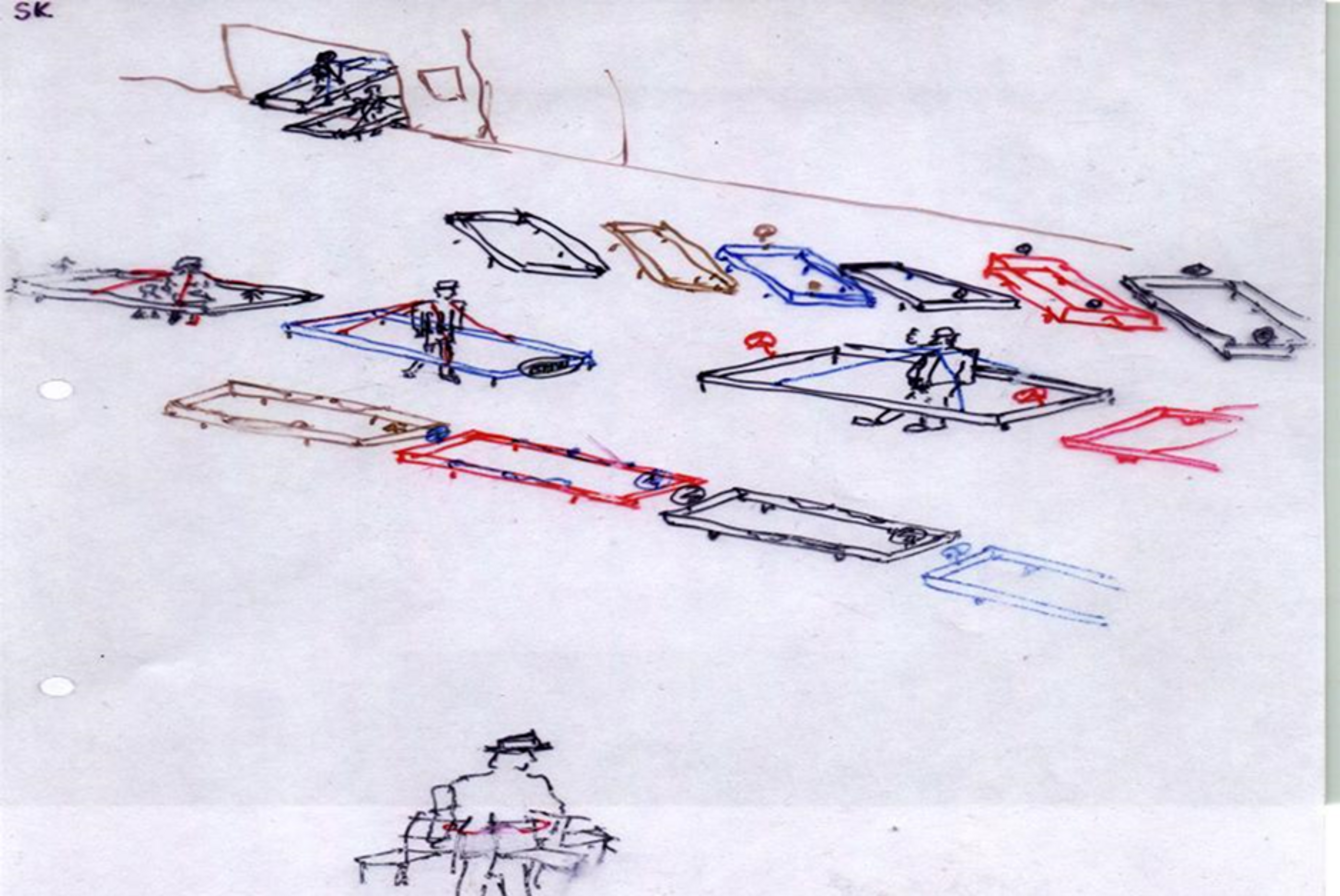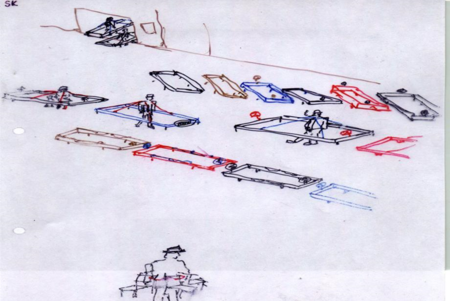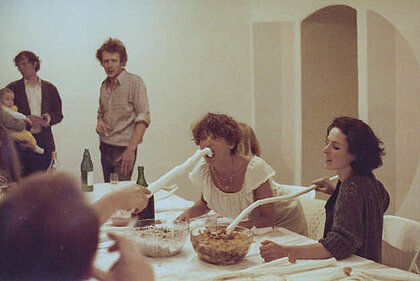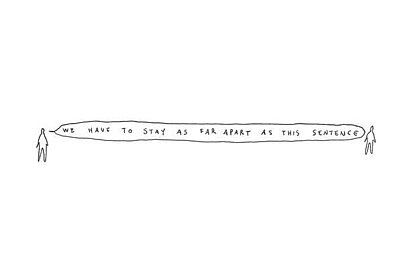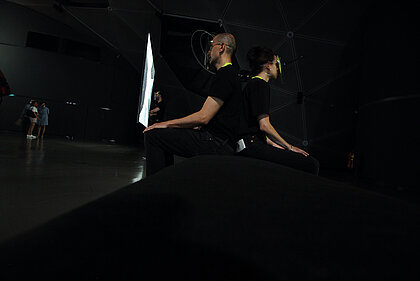Is a term that will continue to shape our society’s understanding of both closeness and distance long after 2020. The Cat-Tree in the Kunsthaus foyer is currently showing a collection of works that explore this theme. Inherently contradictory – with “social” signifying commonality, yet “distancing” suggesting an active separation – this new phrase opens up multiple images of closeness and distance, of active segregation, of withdrawal, but also of social divisions. As an expression, “social distancing” makes the need for space as palpable as the resulting loneliness with all its social and physical boundaries. Issues around safety and freedom have been viral for more than just the last few weeks.
Until recently, real experiences with social interaction were still a top priority even within our digitized society. We may well be about to change all of that. Distance and work in a protected private space could lead to a new kind of social spatial planning.
As early as the late 1960s, Peter Weibel had identified distance as an essential factor towards a functioning coexistence in the digital society. The 2018 work 365 Routines by Nina Kurtela, for instance, speaks to this by creating a dance-based movement dialogue and a daily improvisation beyond the boundaries of physical and temporal space that become a manifesto against loneliness and for digital closeness. The critical works and commentary of the illustrator Aldo Giannotti, who over the last few months has been closely monitoring state recommendations and their consequences in his Virus Diary, show us that digitized work will also be “transparent work” under constant surveillance.
For years now optimism has been expressed about urbanization and maximizing space for the benefit of everyone in cities, yet actually individuals in our distanced society no longer have to meet face to face in order to interact, they can instead simply stay at home – as we have in fact done over recent months in our many home offices – at last, says Weibel. Since the restrictions resulting from the Corona pandemic, it is now becoming clear that we will see the emergence of more rules than before aimed at an organized distanced society. With this in mind we chose a work for the Cat-Tree by Hannes and Herta Priesch, who two years ago reworked the boundaries prescribed by art and museum insurers and safety inspectors, cleverly exaggerating their form: his interpretation of the Austrian flag (Rot-Weiß-Rot, 2018) refers to the distancing measures that states continue to implement even within a united Europe. Artist group Zweintopf’s ‘found footage’ short film focuses on the boundary or border as a physical object arising from the need for demarcation. In 2018 and 2019, exploring the theme of gaps and boundaries, they created an extremely fast-paced compilation of private images of border fences sourced from the Internet.
A flicker movie made from photos of wire mesh, it leaves a potent afterimage of the fear of drawing closer, which today, unlike in 2015, mainly evokes associations with the fear of the unseen. In contrast, in Brigitte Pokornik’s Himmelhölle-Spiel (REM-Galerie, 1985), or similar to René Stessl’s Gemeinsam,a performance that in 2014 accompanied a dinner with oversized spoons for an opening, the state of distance becomes a question of dependency and participation. If the diners did not ‘serve’ each other with their long spoons, they would end up ‘starving’ despite having a full plate in front of them. The opposite is true of Friedl Kubelka’s pictures of Franz West: for West, the Passstücke – wearable sculptures that look like extended body parts – were symbolic of neuroses or prostheses, malformations or diseases that in everyday life would tend to keep other people at a distance. As early as the 1980s, Hermann Knoflacher’s Stehzeug drew attention to the effect of the space requirements of the individual caused by automobility, demonstrating how much space in cities is taken up by our drivable frames.
The long-term effect of the pandemic on what is considered polite etiquette remains to be seen – will handshaking come to be viewed as something of a museum curiosity, like Anna Vasof’s untouchable object on the dial of an old telephone?




















